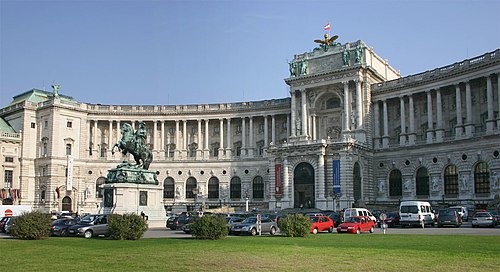
The Mutual and Balanced Force Reductions (MBFR) talks were a series of negotiations aimed at limiting and reducing conventional (non-nuclear) forces in Europe held in Vienna between NATO and Warsaw Pact countries from 1973 to 1989.

The Mutual and Balanced Force Reductions (MBFR) talks were a series of negotiations aimed at limiting and reducing conventional (non-nuclear) forces in Europe held in Vienna between NATO and Warsaw Pact countries from 1973 to 1989.
The MBFR talks were first proposed at the SALT meeting between President Richard M. Nixon and General Secretary Leonid Brezhnev. The two leaders agreed that the political side of the talks would be held by the Conference on Security and Cooperation in Europe (CSCE), while talks dealing with the military side would take place at MBFR. [1]

The preliminary talks started in Vienna in January 1973. [2] At the first meeting, the Russian side rejected the name "MBFR" because the word "balanced" suggested that the Warsaw Pact forces – which had a numerical superiority in Europe – should be reduced more than NATO forces. Their proposed alternative was "Mutual Reductions of Forces and Armaments in Central Europe" (MRFACE), a title that was agreed upon but seldom used. [2]
The aim of the negotiations was an agreement on disarmament and control of conventional arms and armed forces in the territories of the Federal Republic of Germany, the Netherlands, Belgium, and Luxembourg (from NATO) and East Germany, Czechoslovakia, and Poland (from the Warsaw Pact). Representatives from these nations, as well as the United States, United Kingdom, Canada and the Soviet Union, attended the talks.
The first meeting was held on 30 October 1973 in the Hofburg Palace, Vienna. [3] John Thomson, leader of the British delegation, commented:
Our grey little talks are no match for the Congress of Vienna. The Viennese have greeted us in friendly fashion but have probably been disappointed with our lack of glamour and our general 'invisibility'. We have been assigned the Hofburg as the site of our formal meetings whenever they may begin. But we are not destined to use the main salons. We drab bureaucrats are to gather in the room usually reserved for waiting footmen and coachmen in Franz Josef's time. The modern Metternich is not among us. His shadow does indeed fall darkly over us while he flits from Washington to Peking to Tokyo – everywhere but Europe in this 'year of Europe'. Nor do I discern a Talleyrand or a Castlereagh at our amiable 'plenary cocktails'. Instead we have hard-working lawyers and diplomats whose first thought is to engage in drafting and whose second is to avoid publicity.
— [4]
The West put its first proposals on the table on 22 November 1973. This 2-phase plan consisted of the following requirements:
The Warsaw Pact's response to NATO's position was that each side should reduce its forces proportionally rather than absolutely and that equipment and troop numbers should be reduced.
The Warsaw Pact countries submitted a proposal that the USSR and the US should reduce manpower by 2 to 3 per cent and that both the US and the USSR would remove the same number of nuclear warheads, 354 nuclear-capable aircraft, several SCUD-B, and Pershing I launchers, 300 tanks, and a corps headquarters. [3]
In 1976, the different estimates for the number of forces the Warsaw Pact countries were fielding in Eastern Europe became an issue that was never resolved during the talks. (In 1976, the Warsaw Pact gave figures of 815,000 ground force personnel and 182,000 air force personnel, while NATO estimated that the Warsaw Pact had 956,000 and 224,000 personnel, respectively.) [3]
In December 1979, the Soviets held up the talks because NATO decided to site new intermediate-range nuclear missiles in Europe. [1]
The talks ended on 2 February 1989 [3] and were replaced by the Treaty on Conventional Armed Forces in Europe.